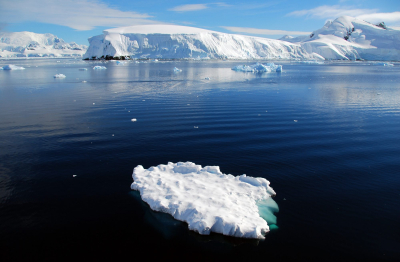
"One of the largest seasonal cycles on Earth happens in the ocean around Antarctica. During autumn and winter the surface of the ocean freezes as sea ice advances northwards, and then in the spring the ice melts as the sunlight returns. However, of late, the area of this sea ice has been shrinking dramatically. And this is of grave concern. But then, Antarctica is so far away. So, does the size of the sea ice surrounding the continent really matter to us? Oh yes, it does. Here's why.
Since the 1970s, we've had satellite records to measure Antarctic sea ice cover. "At the winter maximum, sea ice covers an area more than twice the size of Australia (roughly 20 million square kilometres), and during summer it retreats to cover less than a fifth of that area (about 3 million square km). But then, the record for 2022 showed that the summer minimum was not even 2 million square km. In 2023, this has been a worrying 1.7 million square km.
When the yearly freezing happens, the cold salty water is pushed down into very deep parts of the ocean. The water then flows towards the northern direction. "About 40 per cent of the global ocean can be traced back to the Antarctic coastline." When waters between the surface and the deeper regions are exchanged so, heat and carbon dioxide are trapped in ocean depths. Not just that Nutrients from the deep reach the surface, and since the water moves northwards, these nutrients help support ocean life across the world.
So, when sea ice cover decreases, this exchange suffers, affecting ocean life. Also, without adequate sea ice cover, oceans tend to absorb more heat from the sun, which can lead to increased ocean warming. This can prevent the expansive formation of sea ice during winter, and the deadly cycle would continue. Again, warmer oceans negatively affect the growth of certain marine creatures. This can impact the lives of organisms that consume or are consumed by these creatures, which can have a bearing on marine and terrestrial life the world over.
Picture Credit : Google




